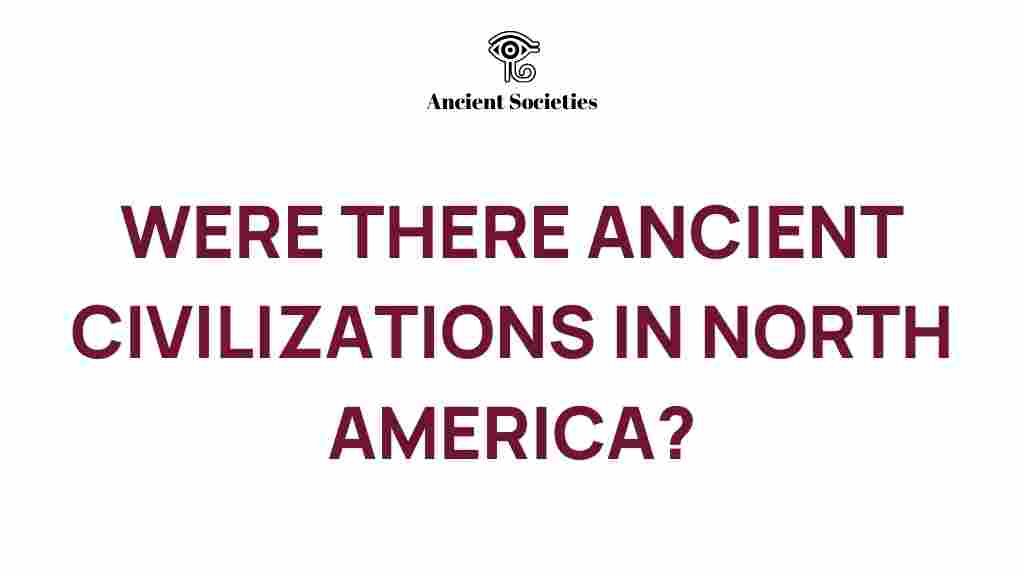Unveiling the Mysteries of Ancient Civilizations in North America
The history of ancient civilizations in North America is rich and complex, filled with stories of indigenous cultures that thrived long before European exploration. Archaeology continues to uncover artifacts and evidence of these lost societies, shedding light on their daily lives, beliefs, and interactions with the environment. Understanding these ancient civilizations not only enriches our knowledge of history but also deepens our appreciation for the diverse cultures that have shaped the continent.
The Importance of Archaeology in Understanding Ancient Civilizations
Archaeology plays a crucial role in unveiling the mysteries of ancient civilizations in North America. Through careful excavation and analysis of artifacts, archaeologists can piece together the lifestyles, trade practices, and social structures of indigenous cultures. Some key aspects include:
- Excavation: The process of digging in specific areas to uncover hidden artifacts.
- Analysis: Examining items such as pottery, tools, and structures to understand their use and significance.
- Preservation: Protecting and conserving artifacts for future study and public display.
Major Ancient Civilizations in North America
Several ancient civilizations emerged in North America, each with unique characteristics and contributions. Here are some of the most notable:
- The Ancestral Puebloans: Known for their impressive cliff dwellings and intricate pottery, the Ancestral Puebloans thrived in the Four Corners region.
- The Mississippian Culture: Famous for their mound-building, this culture flourished in the southeastern United States, with Cahokia as its largest city.
- The Hohokam: Residing in present-day Arizona, the Hohokam are known for their advanced irrigation systems that supported agriculture in arid regions.
- The Mound Builders: This term refers to various cultures that built earthen mounds for ceremonial and burial purposes across North America.
Exploration and Discovery of Ancient Artifacts
The exploration of ancient civilizations in North America has led to the discovery of numerous artifacts that provide insight into indigenous cultures. These artifacts include:
- Pottery: Used for cooking and storage, pottery styles differ significantly between cultures.
- Tools: Stone tools reveal information about the technological advancements and daily activities of ancient peoples.
- Jewelry: Adornments made from materials like shell, bone, and stones highlight trade networks and social status.
For those interested in exploring more about these artifacts, you can visit museums that house extensive collections of indigenous artifacts, such as the Smithsonian National Museum of the American Indian.
Understanding Indigenous Cultures Through Artifacts
Artifacts provide a window into the lives of ancient civilizations. By studying objects left behind, researchers can infer:
- Social Structure: Items such as burial goods can indicate social hierarchy.
- Economic Practices: Trade goods reveal the economic networks and relationships between different groups.
- Cultural Beliefs: Ritualistic items and art can provide insights into the spiritual lives of these societies.
Pre-Columbian Societies and Their Legacy
Pre-Columbian societies refer to the cultures that existed before the arrival of Christopher Columbus in 1492. These societies left a lasting legacy that can still be seen in contemporary indigenous cultures. Notable contributions include:
- Agricultural Innovations: The domestication of crops like maize, beans, and squash transformed diets and agriculture.
- Architectural Achievements: Monumental structures, such as the Pyramids of the Sun and Moon in Teotihuacan, showcase advanced engineering skills.
- Artistic Expressions: Rock art, pottery, and textiles reflect the aesthetic values and beliefs of these societies.
Challenges in Archaeological Exploration
While archaeology sheds light on the past, it is not without challenges. Some common issues include:
- Funding: Archaeological projects often struggle to secure funding for excavation and research.
- Site Preservation: Urban development and environmental changes can threaten ancient sites.
- Cultural Sensitivity: There is a growing awareness of the need to respect indigenous cultures and their perspectives on archaeological practices.
Step-by-Step Process of Archaeological Excavation
The process of archaeological excavation is meticulous and involves several key steps:
- Site Selection: Researchers identify areas with potential historical significance based on existing evidence.
- Permits and Permissions: Obtaining necessary permits and consulting with local indigenous communities is crucial.
- Excavation: Carefully uncovering layers of soil to reveal artifacts while documenting their context.
- Analysis: Cataloging and analyzing the artifacts to draw conclusions about the civilization.
- Reporting: Sharing findings through publications, exhibitions, and educational outreach.
Troubleshooting Common Issues in Archaeological Work
Archaeologists often face various challenges during their work. Here are some troubleshooting tips to address common issues:
- Issue: Incomplete records of previous excavations.
Solution: Reach out to other researchers or institutions that may have conducted work in the area. - Issue: Limited access to sites due to regulations.
Solution: Engage with local communities and stakeholders to gain support and permissions. - Issue: Poor artifact preservation.
Solution: Utilize modern conservation techniques and collaborate with specialists.
Conclusion: The Impact of Ancient Civilizations on Modern Society
Unveiling the mysteries of ancient civilizations in North America provides invaluable insights into the history and heritage of the continent. Through archaeology, we gain a deeper understanding of the indigenous cultures that enriched the fabric of North America long before European exploration. The artifacts and legacies of these lost societies continue to influence modern life, reminding us of the importance of respecting and preserving our shared history.
As we continue to explore and learn about these ancient civilizations, it is essential to foster a dialogue with contemporary indigenous communities, ensuring that their voices and perspectives are included in the narrative of history. By doing so, we honor the past and pave the way for a more inclusive future.
This article is in the category Archaeology and created by AncientSocieties Team
